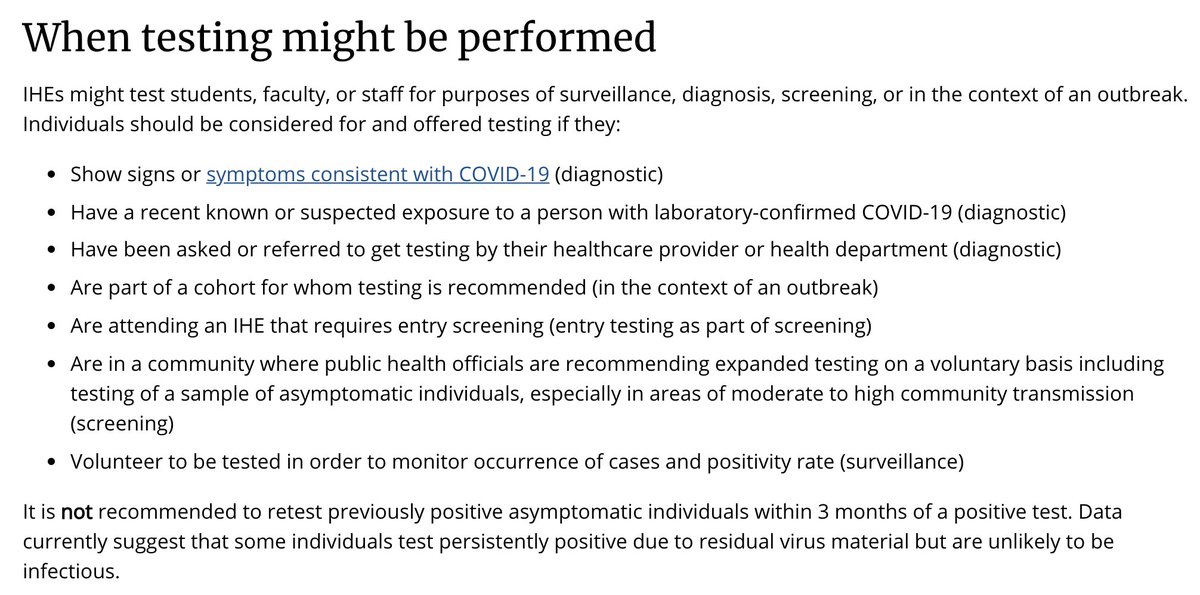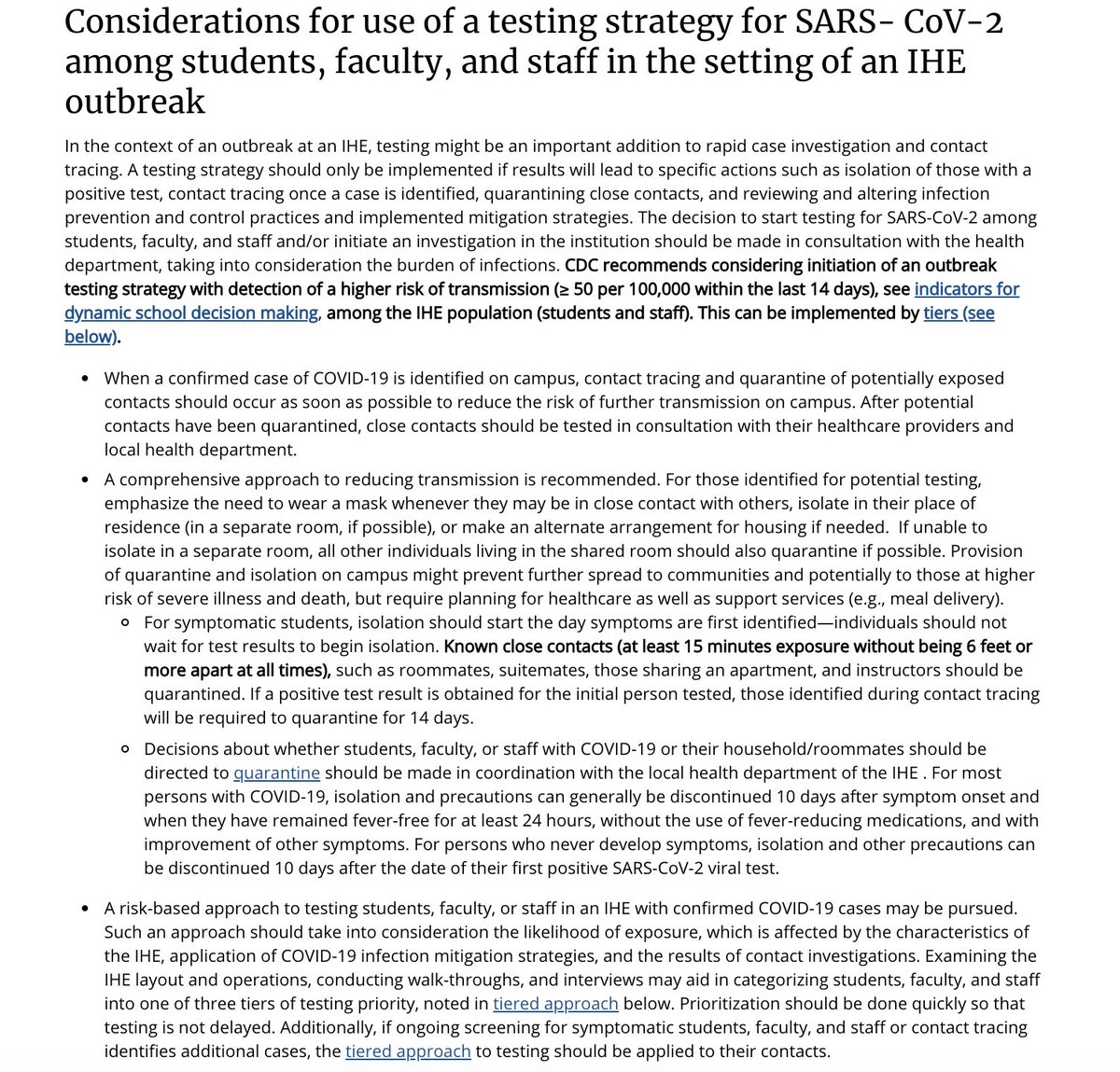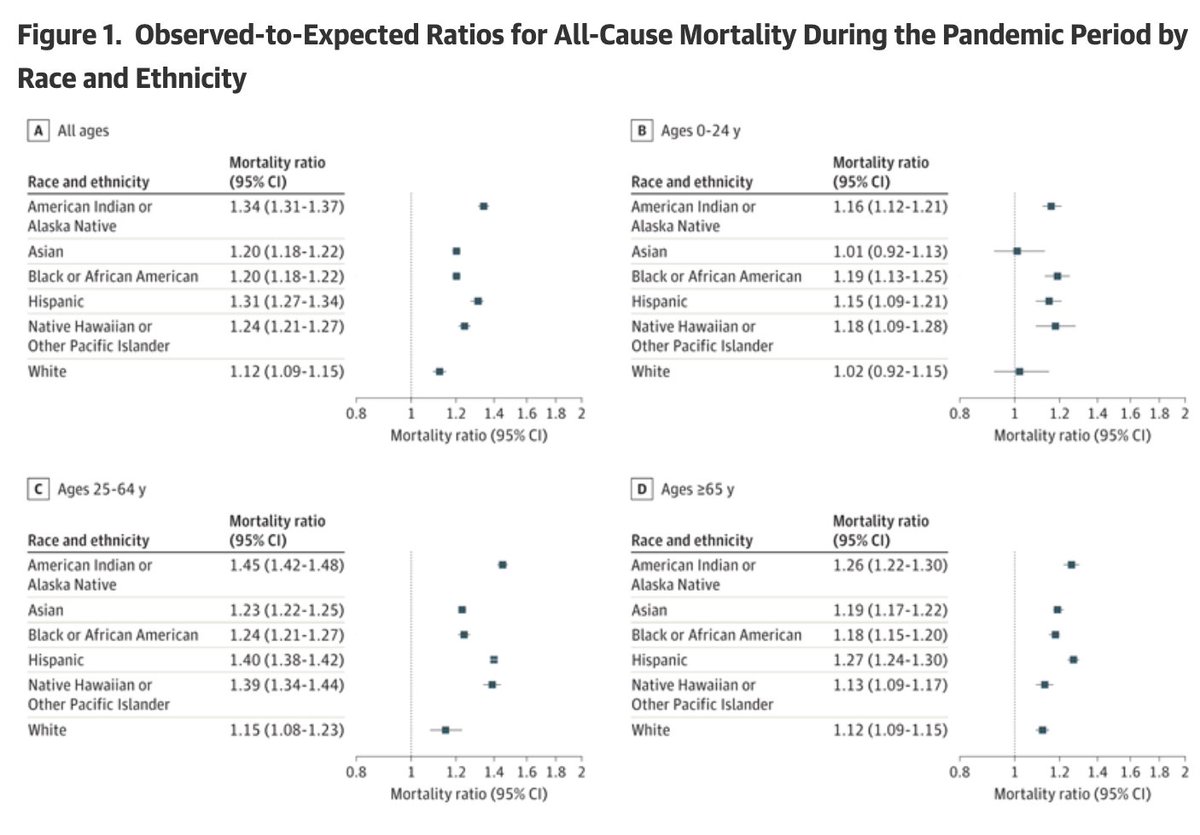New: The CDC has updated its testing guidance for colleges and universities. Previously only recommending testing for symptomatic individuals and contacts (and not recommending entry testing), the agency has posted more comprehensive guidelines. Thread:
cdc.gov/coronavirus/20…
cdc.gov/coronavirus/20…
In the June 30 guidance, the CDC "does not recommend entry testing of all returning students, faculty, and staff." Experts like @CT_Bergstrom have critiqued this decision, calling it "inexplicable and irresponsible."
chronicle.com/article/the-cd…
chronicle.com/article/the-cd…
This guidance seemed to push many colleges nationwide to not test all students on entry. Those who didn't (UNC) failed. In our August paper (@lpachter, @sinabooeshaghi, @faythtan, @DrZackaryBerger), we found only 27% of colleges were doing entry testing.
medrxiv.org/content/10.110…
medrxiv.org/content/10.110…
This new guidance was no doubt as a result of yesterday's JAMA commentary, in which CDC Director Redfield was a co-author. "Robust testing both on and near campuses will be essential for reducing or preventing transmission."
jamanetwork.com/journals/jama/…
jamanetwork.com/journals/jama/…
As you can see from the old (left) and new (right) guidance, the reasons for which testing might be performed was greatly expanded to include outbreak testing, screening and surveillance. 



First: Symptomatic individuals and asymptomatic contacts. The new guidance is more detailed. CDC now suggests testing for all those in an expanded setting (residence hall floor) as well as widespread testing (across buildings). CDC recommends full quarantine regardless of result. 



In the context of an outbreak, the CDC presents a tiered system for testing priority. After symptomatic individuals and contacts:
- Those in outbreak settings
- Random sample of asymptomatic students, faculty, and staff
- Community-based testing strategy by health departments

- Those in outbreak settings
- Random sample of asymptomatic students, faculty, and staff
- Community-based testing strategy by health departments


Now onto screening: "Testing a random sample of asymptomatic students, faculty, and staff could increase the timeliness of outbreak detection and response by rapidly identifying and isolating COVID-19 cases." While there is not a concrete mandate, recommendations are presented. 





Notes about off-campus testing, which "might pose a higher risk of SARS-CoV-2 transmission."
"Strategies to mitigate the spread of SARS-CoV-2 are not only to limit transmission on IHE campuses, but to also prevent transmission to the surrounding community."
"Strategies to mitigate the spread of SARS-CoV-2 are not only to limit transmission on IHE campuses, but to also prevent transmission to the surrounding community."

Summary: These CDC guidelines are a major improvement from the June update and I hope they will be heeded by institutions as they make plans for the spring. @ChrisMarsicano and the team at @C2Initiative will have an updated testing plan database soon, which will be very useful.
We will continue to conduct research into the importance and efficacy of broad testing strategies in colleges, using case studies from those who do test and those who do not (as much). Much to learn over the next few months.
CC @gregggonsalves, @jhuber, @ADPaltiel, @RWalensky
CC @gregggonsalves, @jhuber, @ADPaltiel, @RWalensky
Also reccommend reading @GYamey and @BhadeliaMD’s piece for spring reopening plans. Testing is a key component.
time.com/5894204/univer…
time.com/5894204/univer…
• • •
Missing some Tweet in this thread? You can try to
force a refresh




















